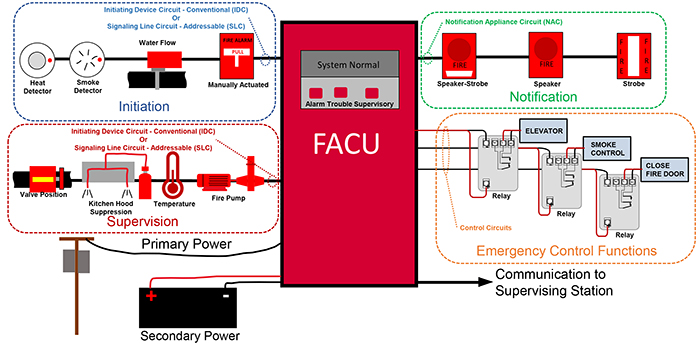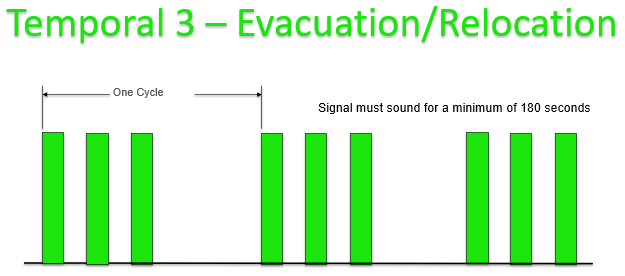Fire alarm systems is a crucial part of the overall fire protection and life safety strategy of a building. Among their key functions, notification plays an important role in alerting occupants to potential dangers and facilitating prompt evacuation or response. In this guide, about the basics of fire alarm system notifications, we will explore the components of fire alarm system notification, how they operate, and guidelines for representing them visually.

At the core of the system is the FACU, which coordinates the activation of notification appliances. It sends signals to audible and visible devices via Notification Appliance Circuits (NAC). During normal operation, a supervisory voltage ensures the integrity of the circuit. In an alarm condition, the FACU reverses polarity and increases voltage to activate the notification appliances.
Audible notification: Audible signals are essential for alerting occupants to the presence of fire or other emergencies. These signals typically consist of tones, voice messages or a combination of both. Speakers and horns are commonly used to emit these alerts, ensuring they are heard clearly throughout the building.
Visible notification: Visual signals complement audible alerts, particularly benefiting individuals with hearing impairments or those in noisy environments. Strobe lights are the most common form of visual notification, providing flashing lights that draw attention and convey urgency.

Temporal 3 – Evacuation/relocation alarm notification
Temporal 3 signaling is primarily used for evacuation or relocation alarms. It involves a distinctive pattern of three pulses followed by a one-second pause, repeating in a continuous cycle. This pattern is designed to grab attention and prompt immediate action from building occupants to evacuate safely.
- The Temporal 3 pattern consists of three short bursts of sound followed by a pause, which repeats until the alarm is silenced or the emergency is resolved.
- The sound emitted during Temporal 3 signaling is typically loud and distinct, ensuring it can be heard clearly throughout the building.
- Often accompanied by flashing strobe lights to provide visual cues, enhancing awareness and aiding in evacuation efforts, especially in noisy or crowded environments.

Temporal 4 – Carbon monoxide alarm notification
Temporal 4 signaling is specific to carbon monoxide (CO) alarms, alerting occupants to the presence of this odorless, potentially deadly gas. It serves to warn individuals to evacuate the premises immediately and seek fresh air.
- Temporal 4 follows a pattern of four equally spaced pulses, each lasting 0.5 seconds, followed by a 1.5-second pause before repeating.
- The repetitive nature of Temporal 4 ensures recognition and differentiation from other alarm signals within the building.
- Similar to Temporal 3, this type alarms are often paired with strobe lights to provide visual confirmation of the alarm condition.

Understanding the distinct characteristics and visual representation of Temporal 3 and Temporal 4 alarm notifications is crucial for effective fire safety planning. By accurately depicting these alarm types in drawings and utilizing visual aids, building owners, occupants, and emergency responders can better prepare for and respond to emergencies, ensuring the safety and well-being of all individuals within the premises.
Fire alarm systems are designed to provide alerts tailored to different scenarios and occupant needs. Understanding the distinctions between public mode signaling and private mode signaling is essential for effectively communicating emergency information within buildings. Let’s delve deeper into these two modes of alerting and their implications for fire safety.

Public mode signaling is designer to notify all occupants within a building of an emergency situation that requires immediate action, such as evacuation. It aims to alert everyone, including visitors and unfamiliar individuals, ensuring no one is left unaware of the danger.
Private mode signaling is tailored to notify specific individuals or groups within a building who are responsible for responding to emergencies or implementing specific actions. It aims to avoid unnecessary panic among other occupants who may not be directly involved in emergency response.
Knowing the differences between public mode signaling and private mode signaling in fire alarm systems is vital for optimizing emergency response and ensuring the safety of building occupants.
For further insights into fire alarm system design and implementation, explore our resources and stay informed about best practices in fire safety and emergency preparedness.
Images used in the blog post ar copyrighted to https://www.nfpa.org/
















